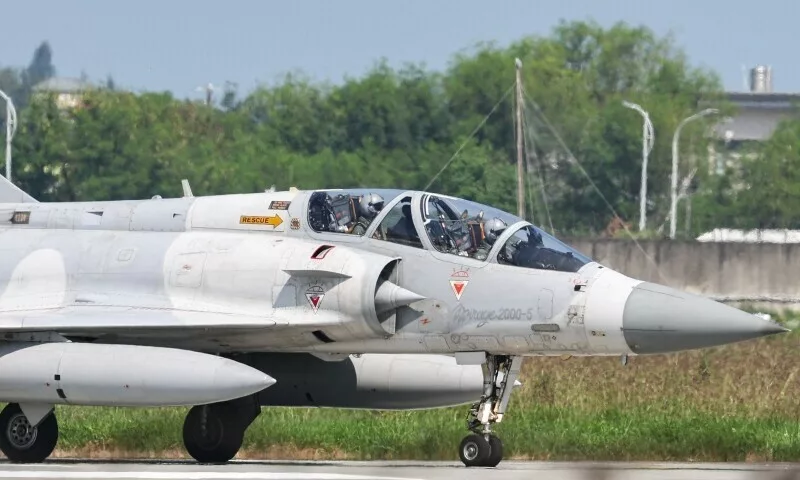China deployed fighter jets and warships to encircle Taiwan on Monday, conducting drills that Beijing described as a “stern warning” to “separatist” forces on the self-governed island.
This marks Beijing’s fourth round of large-scale military exercises in the past two years, as it has not ruled out using force to assert control over Taiwan. The United States has criticized China’s actions as “unwarranted” and a potential risk for escalation, urging Beijing to exercise restraint.
Taiwanese President Lai Ching-te, who assumed office in May, has taken a stronger stance on Taiwan’s sovereignty than his predecessor, Tsai Ing-wen, prompting Beijing to label him a “separatist.” On Monday, Lai pledged to “protect democratic Taiwan and safeguard national security,” while Taiwan’s defense ministry reported that it had mobilized “appropriate forces” in response to the drills.
AFP journalists near the Hsinchu air force base in northern Taiwan observed the takeoff of 12 fighter jets. The defense ministry indicated that outlying islands administered by Taipei were on “heightened alert” and that “aircraft and ships will respond to enemy situations in accordance with engagement rules.”
According to Chinese military spokesman Captain Li Xi, the exercises, known as Joint Sword-2024B, are aimed at testing troops’ “joint operations capabilities” and are occurring in “areas to the north, south, and east of Taiwan Island.” They focus on sea-air combat readiness, blockades of key ports, and assaults on maritime and ground targets.
China’s coast guard was also involved, conducting “inspections” around Taiwan. A diagram released showed four fleets encircling the island in an anticlockwise direction. While Taiwan reported sightings of Chinese coast guard ships, they had not entered its prohibited waters.
In recent years, China has increased its military activities near Taiwan, with warplanes and ships maintaining a constant presence around the island. Taiwan’s defense ministry emphasized that all military personnel were on high alert.
Lai convened a high-level security meeting in light of the drills, with National Security Council Secretary-General Joseph Wu labeling the exercises “inconsistent with international law.” In his National Day speech, Lai vowed to “resist annexation” and asserted that Beijing and Taipei are “not subordinate to each other.”
China maintains that these drills are “a legitimate and necessary operation for safeguarding state sovereignty and national unity.” According to Taiwan’s defense ministry, 25 Chinese aircraft and seven naval vessels were detected around the island in a 26-hour period leading up to 8 AM (12 AM GMT).
Lieutenant Colonel Fu Zhengnan, a researcher at the Chinese Academy of Military Sciences, stated that the drills could “switch from training to combat at any time,” warning that any provocations from Taiwanese separatists would lead to immediate PLA action.
Despite the drills, residents in Taipei appeared largely unfazed. One engineer, Benjamin Hsiao, remarked, “I won’t panic too much because they quite often have drills. It’s not the first time in recent years anyway, so I feel a bit numb.”
The ongoing tensions between China and Taiwan trace back to the civil war that ended in 1949, when the nationalist forces of Chiang Kai-shek retreated to Taiwan after being defeated by Mao Zedong’s communist fighters, leading to separate governance for the two entities.




